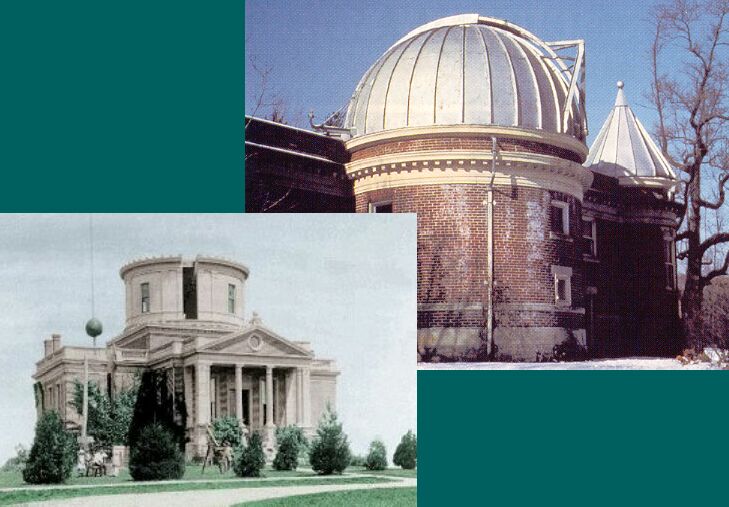

On April 14, 1845, in the gray of a lingering twilight above the rapidly growing city of Cincinnati, Mitchel took his first look through the great telescope he worked so hard to bring to the city. He saw the moon, "her mountain heights, her rocky precipices and her dells " Jupiter, "globe of surpassing splendor " the Saturnian system, "the mind overwhelmed in wonder and astonishment." Astronomers call this first view through the telescope First Light, and it marks the telescope’s birthday.Īs the first crowd-sourced scientific institution in the world, Mitchel had to reward his investors. Anyone who contributed was able to use the telescope and quickly the public clamored for looks as well. Within a year, the Cincinnati Observatory held public viewing nights and the telescope has been accessible ever since.ĭean Regas: I got to be 'Astronomer in Residence' at the Grand Canyon A new mountaintop home Our history: Observatory taught us to look to the stars

In Munich, Bavaria (prior to a unified Germany), he discovered the telescope of his dreams at the workshop of Merz and Mahler, the supreme telescope-makers of the 19th century. Over the next two years, Merz and Mahler finished the telescope, shipped the 2,000 pounds of astronomical equipment across the Atlantic Ocean, via New Orleans, up the Mississippi and Ohio rivers to downtown Cincinnati. The old telescope in Cincinnati has always been the people’s telescope. In 1842, Cincinnati professor Ormsby Mitchel was a dynamic, eloquent speaker and the first American populizer of astronomy – the Neil deGrasse Tyson of the 1800s. Mitchel began raising money for the telescope by going door to door soliciting $25 per person to invest in this new endeavor (that was the equivalent of an average monthly salary in 1842). Contributions came from all walks of life and every trade. In less than two months, Mitchel raised nearly $7,500 – enough to start shopping around for a proper telescope in Europe. The 11-inch-diameter lenses at the top, ground to perfection, gather light from distant planets, stars and galaxies. And you can visit and observe through this 177-year-old work of art and science. He also hosts an astronomy podcast with Anna Hehman called "Looking Up!"Īt the Cincinnati Observatory, he has developed his skills as a dynamic writer and public speaker who brings the complicated field of astronomy down to Earth for students of all ages.The Cincinnati Observatory is known as the Birthplace of American Astronomy. It is the first public observatory and houses one of the oldest working telescopes in the world. The brass and mahogany telescope tube is 16 feet long. Dean is a frequent guest on National Public Radio’s Science Friday with Ira Flatow and NPR's Here & Now. Dean has written over 160 astronomy articles for the Cincinnati Enquirer, blogged for the Huffington Post and is regularly featured on television and radio. Dean is a Contributing Editor to Sky and Telescope Magazine and a contributor to Astronomy Magazine, where he won 2008 “Out-of-this-World” Award for astronomy education. He is the author of six books including "Facts From Space!" and "100 Things to See in the Night Sky".

He is a renowned educator, author, national popularizer of astronomy and an expert in observational astronomy.įrom 2010-2019 Dean was the co-host of the PBS program Star Gazers. Tickets: $20/person, $15/Observatory Memberįeatured in the New York Times and Washington Postĭean has been the Astronomer for the Cincinnati Observatory since 2000. This class is perfect for beginner stargazers of all ages.Īnd weather permitting, you'll get to go outside and get a guided tour of the actual sky with Dean and then view objects close up with telescopes.

Then keep up with where to find the planets with the naked eye.
Cincinnati observatory how to#
Learn how to identify the stars, constellations, and planets of the season with expert astronomer Dean Regas.Įxplore the constellations Leo, Bootes, Virgo, and Hydra as well as some holdovers from the Winter Sky like Orion and Gemini. Learn how to identify the stars, constellations, and planets of the season with expert astronomer Dean Regas.


 0 kommentar(er)
0 kommentar(er)
